Hickory nuts show promise as food for the future
| Published: 11-14-2023 4:20 AM |
CLAREMONT — Hickory wood makes for durable floor boarding, ax handles and baseball bats. Whittled into narrow spokes, hickory once even propelled wagon wheels across the country.
The wood is a good “shock absorber,” said Jesse Marksohn, who grows hickory trees at Yellowbud Farm. Marksohn founded the farm, which has nursery sites in two Vermont locations and western Massachusetts.
But these days, Marksohn sees the tree as absorbing a shock beyond the mechanical. As climate change continues to cause erratic, extreme weather, and worsen the impacts of natural disasters, not hickory wood — but hickory nut — will be here to “equip the farms of the future,” he said.
Last Tuesday evening, from a loading bay at the senior center at the Sullivan County Complex in Unity, Lionel Chute, director of the county’s natural resources division, helped Marksohn and his business partner Eric Cornell move crates of yellowbud hickory nuts — about the size of ping pong balls — into the bed of their pickup.
The namesake of Marksohn’s project, yellowbud, a type of hickory, has the highest nut-to-shell ratio of the tree’s varieties, making it the easiest to process. That’s the goal: Instead of “sugarbushes,” Marksohn and Cornell want to cultivate “oil bushes.”
In a bid to introduce a market for nut oils in New England, the pair are pitching cooking oil made from hickory nuts as a first step in further localizing the region’s food chain.
The trees can be found growing about 10 miles from the edge of the Connecticut River, in any direction, Chute said. As temperatures rise, the trees move northward, and populations become more dense. Chute likens it to a “tongue of yellowbud hickory” moving up the Connecticut.
Hickory is among the “most resilient and adaptable” trees in North America, reads a flier from Marksohn’s farm. They have the most expansive range of all walnut family trees (which include pecans), stretching the length of the East Coast and west as far as Iowa.
Article continues after...
Yesterday's Most Read Articles
In addition to being able to “thrive” in flood zones, the trees are drought and largely frost tolerant, making them “exceptionally” climate resilient.
In short, they’re incredibly adaptable.
More food made in the region insulates residents from snags in the global supply chain that can lead to price hikes. The cost of produce in Vermont rose nearly 10% when the COVID-19 pandemic disrupted trade, contributing to a 90% increase in Vermonters utilizing state food assistance in that period, according to the Vermont Foodbank, based in Barre, Vt.
Growing locally also cuts down on greenhouse gas emissions caused by far-flung transportation between farms and sellers.
By 2030, New England has the potential to triple its food production, according to a report released this summer by the New England Food System Planners, an inter-state strategy commission. Currently, the region produces about 10% of its own food needs locally.
Just a little over 1% of fats and oils, and under 2% of grains used in New England are produced locally.
Marksohn and Cornell’s thinking is that the production capacity for those categories is already here, some of it lying in wait on the ground. It’s just untapped.
This fall, they hired people to collect the nuts that had dropped from hickories across the Upper Valley. Harvesting groups fanned across the region, and were paid $5 a gallon to collect nuts from the ground below trees that Chute, the county official, and the Yellowbud farmers had already identified.
Marksohn and Cornell will process them into oil this winter. The byproduct from the process, a pulpy paste made from shells and nut skins that Marksohn calls the “nut cake,” makes for good bird feed.
Other factors apart from warmer temperatures are also precipitating the expansion. As ash trees continue to die from damage caused by the emerald ash borer, an invasive insect, hickories — which fill the same ecological niche — are taking the place of ash in some areas, Cornell said.
There’s already a healthy population of young saplings in Claremont’s Moody Park, he added.
Taking advantage of the northward-bound distribution of hickory is an opportunity to bring “a new food online” in the region, Chute said.
Hickory oil has a smoke point comparable to olive oil, and a higher fat content, and tastes “really light, sort of clean tasting,” said Tina Barney, who owns a tree nursery in Hartland where she grows hickory.
But the project doesn’t end with hickory, she said. There’s an entire menu of more climate-resilient, sustainable foods.
Barney, along with Markhson, Cornell and several others, banded together to form Northern Forest Foods, an organization that advocates for harvesting more staple foods made from perennial plants, particularly nut trees.
The process doesn’t require fertilization or tilling, which increases soil erosion and releases carbon dioxide into the atmosphere.
Through Northern Forest Foods, they secured a bit over $23,000 in grant funding, which they will receive in installments, to purchase equipment to process the hickory nuts into oil. The money came from a U.S. Department of Agriculture program meant to increase the competitiveness of specialty crops.
With the oil tree “taken care of” in the yellowbud hickory, Barney said the group is now looking to grow trees that have high carbohydrate content in their nuts. Chestnuts for example, which Marksohn and Cornell also grow at their farm, are a rich carb source, and can be ground into a gluten-free flour.
Black walnuts or butternuts, native trees whose population has dwindled due to disease, could be revived as a protein source.
But in shifting food sources, which are typically so static, “unfamiliarity” is a barrier, Barney said.
That and the delay in financial returns. It can take decades from planting to grow a fruit-bearing tree, she said. But there’s no need to replace an entire crop system.
“But just do this on some side acreage,” Barney said. “Do this for your kids and grandkids.”
“Grow some food that they’ll be able to harvest, even if you won’t.”
About once a week between September and the end of October, seventh and eighth graders from Charlestown Middle School made their way to a house at the south end of town, where a landowner had given them permission to collect fallen nuts around a hickory tree.
Science teacher Shawn Stevens learned of the project from the county’s natural resources division, which got him in touch with the owner of the tree.
The project was meant to help the students learn that community connection and environmental awareness, “has to be a part of your life,” Stevens said.
It had a more tangible payoff, too.
Over the course of a month, the students collected just under 90 gallons of nuts, netting them over $400 from Northern Forest Foods, which will process them into oil. The money will help bankroll the class’ end-of-school-year field trip to a trampoline park in Manchester.
Frances Mize is a Report for America corps member. She can be reached at fmize@vnews.com or 603-727-3242.

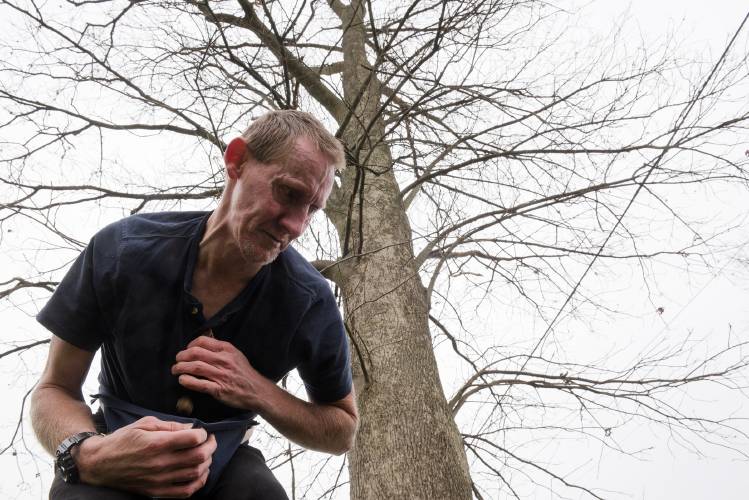
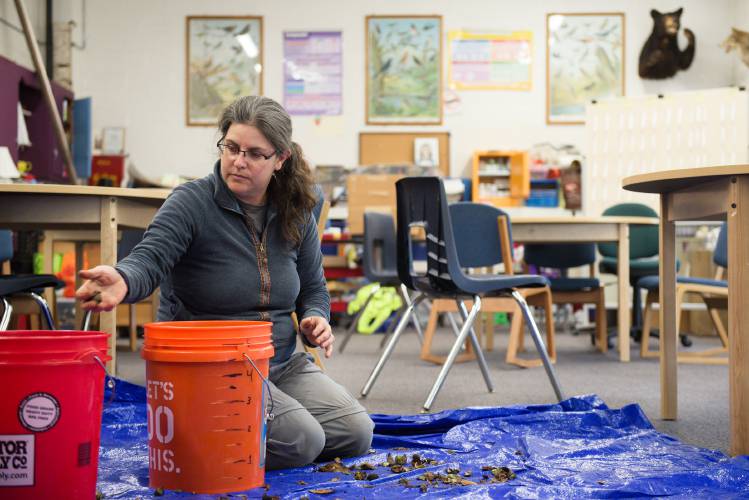
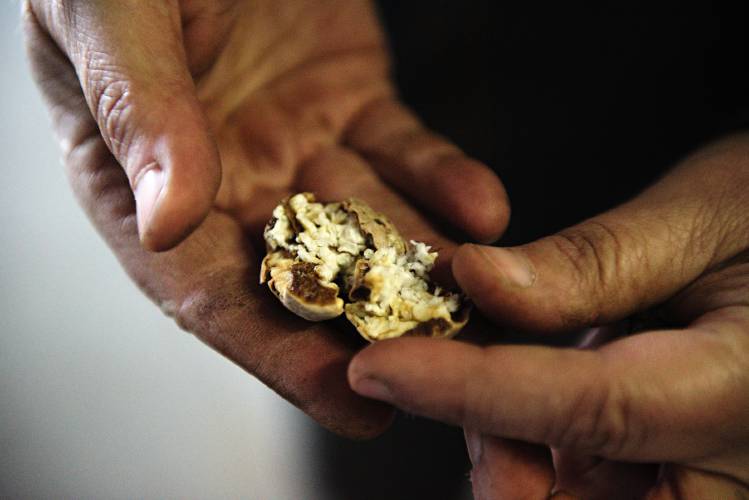
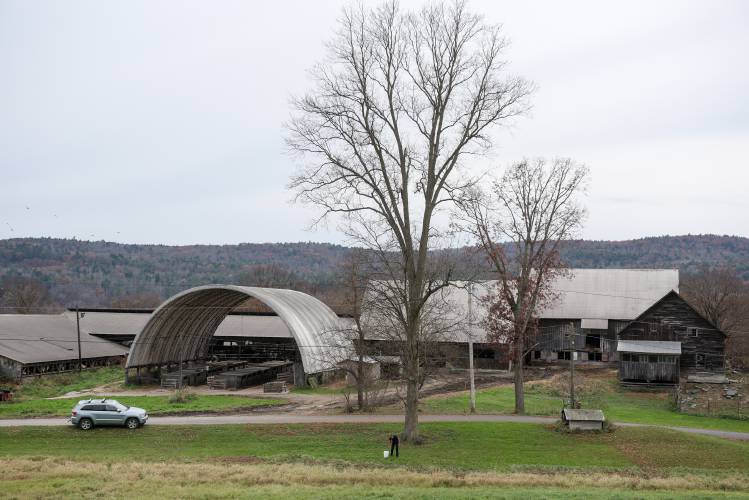
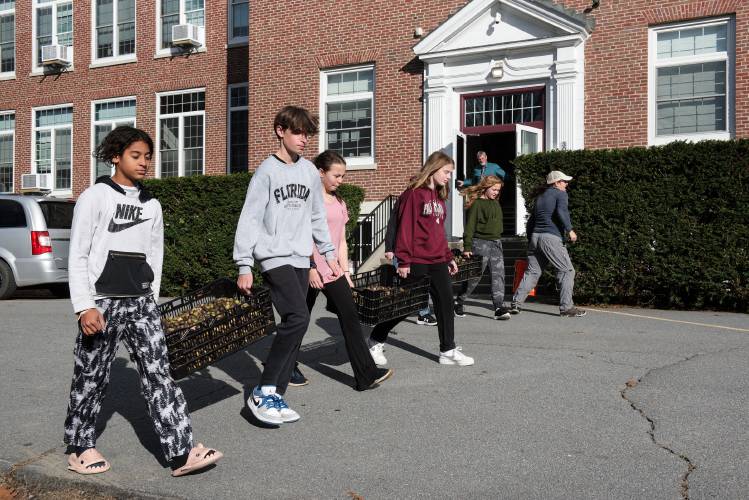
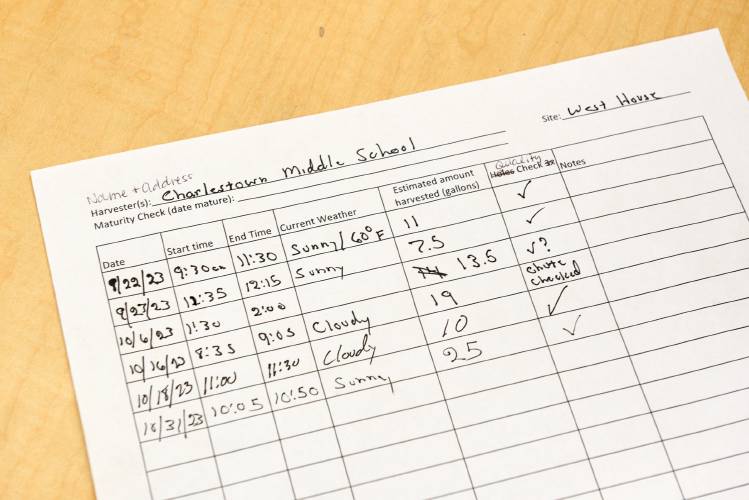
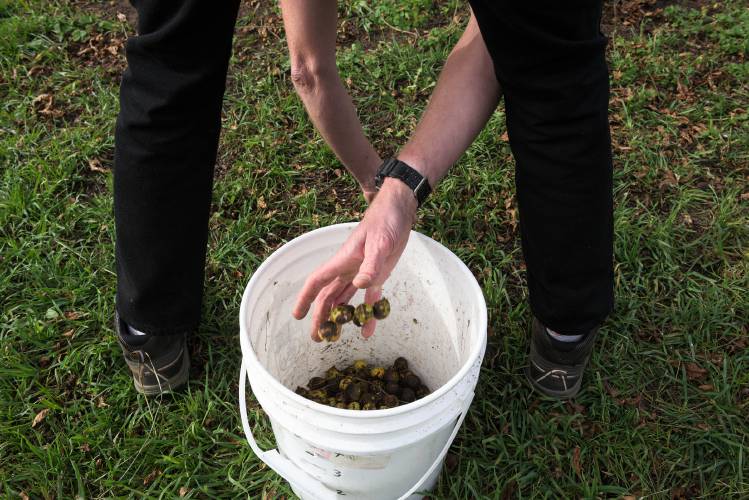
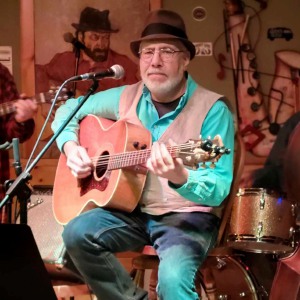 Art Notes: Canaan Meetinghouse showcase brings musicians and listeners together
Art Notes: Canaan Meetinghouse showcase brings musicians and listeners together A Look Back: Upper Valley dining scene changes with the times
A Look Back: Upper Valley dining scene changes with the times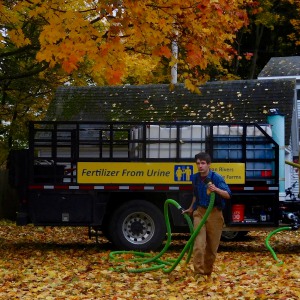 The future of fertilizer? Pee, says this Brattleboro institute
The future of fertilizer? Pee, says this Brattleboro institute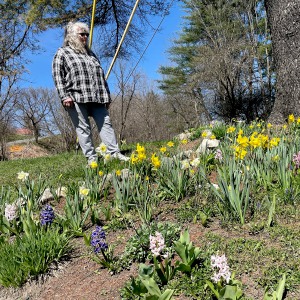 From dirt patch to a gateway garden, a Randolph volunteer cultivates community
From dirt patch to a gateway garden, a Randolph volunteer cultivates community 
